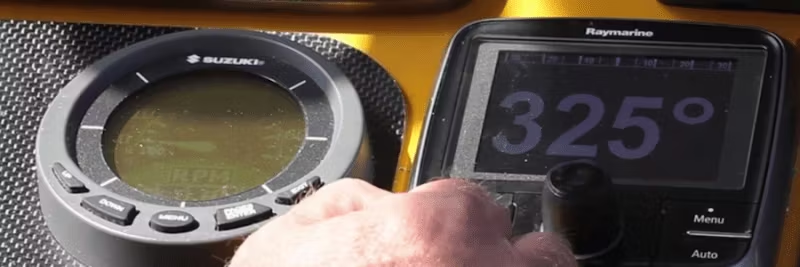Optimize settings, check common causes, and record SeatalkNG data for analysis.
Autopilots are complex systems affected by sensor data, vessel speed, steering characteristics, and weather. If steering is not working as it should, it is usually due to settings or incoming data – not hardware failure. Here is a quick guide to finding and solving the problem.
Checks before recording SeatalkNG data
Before logging data, check the following (Calibration Lock = Off):
- Hard-over time: Crucial for EV-100/EV-200 without rudder reference. Standard 10 seconds – adjust according to your boat's steering (Menu > Setup > Autopilot calibration > Drive settings).
- Speed data: Select Speed Over Ground (SOG) for best results.
- Vessel type: Test different types in Vessel Settings for optimal performance.
- Software version: Update to the latest version via MFD or Wi-Fi.
- Compass calibration: Perform Restart Compass after relocation or environmental changes.
Why log SeatalkNG data?
A recording provides time-stamped information about:
- Course vs GPS course
- Speed through water vs over ground
- Autopilot mode (Standby, Auto, Track)
- Requested/actual rudder angles
- Yaw, pitch, roll, wind data
- Alarms and error messages
With this data, we can analyze your journey and identify the cause of the problem.
How to record SeatalkNG data
Lighthouse 4:
- Home > Settings > Network > Diagnostics > NMEA devices and messages. Select storage location and press Start Recording.
- Press Back and Refresh to poll devices.
Lighthouse 2:
- Home > Setup > Maintenance > Diagnostics > Interfaces > Record File. Start recording.
- Poll devices via Select Device.
When recording is in progress:
- Run the autopilot until the problem occurs (log at least a few minutes).
- Stop recording and turn off Debug Mode.
- Attach log files with problem description to Raymarine Support.
If you lack LH2/LH3 MFD
Contact an authorized Raymarine technician or support for assistance with recording via external data logger.
Applies to:
All SeatalkNG-connected autopilots, including the SPX series and Evolution.
Once you have created the log:
Send it to Raymarine technical support via Ask Raymarine along with a detailed description of the problem.
